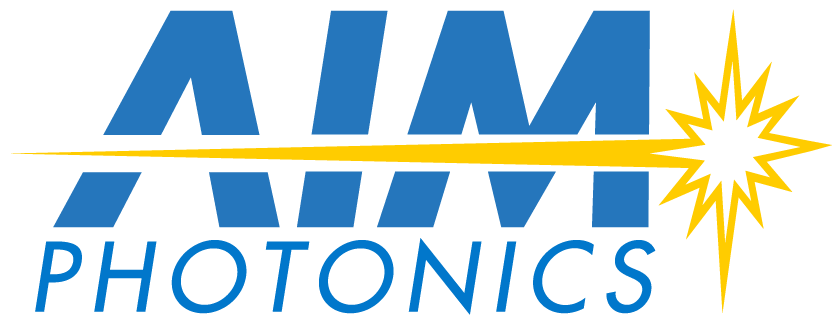
This story is one in a 10-part series marking AIM Photonics’ 10th Anniversary by highlighting the Institute’s Top 10 Milestone Accomplishments of the past decade.
Strategic Partnerships:
A Network for National Impact
In the race to secure U.S. leadership in next-generation microelectronics, no single organization can go it alone. That’s why AIM Photonics was built from the start as a catalyst for collaboration, bringing together the strengths of government, industry, and academia to accelerate innovation in integrated photonic circuits.
Over the past decade, AIM Photonics has led key advances in the development of integrated photonics technologies, which simultaneously allowed it to emerge as a critical facilitator capable of mobilizing the right partners to solve high-priority challenges in technology development. The institute’s network of strategic collaborators is helping move photonic technologies from the lab into U.S. industries.
The Institute’s coordinating role is increasingly vital as innovation becomes more distributed and timelines tighten. AIM Photonics helps ensure that good ideas aren’t stranded in the lab or lost offshore, but instead are developed, tested, and manufactured here in the U.S.
Universities: Where Ideas Take Root For Scalability
AIM Photonics’ university partners are more than research collaborators—they are foundational to the Institute’s mission. These relationships form a critical pipeline where early-stage ideas can be developed, validated, and scaled into manufacturable technologies. Through collaborations, AIM Photonics can engage more deeply with the academic research community to push the boundaries of what’s technically feasible.
Academic partnerships bring deep technical expertise and a culture of curiosity-driven exploration. But these aren’t purely academic exercises because AIM Photonics turns this research into real-world solutions by offering access to advanced design tools, process development support, and prototyping capabilities. Universities working with the Institute gain a pathway to test and validate new technology concepts in a commercial-grade fab environment.
AIM Photonics’ partnerships also play a key role in workforce development. Collaborations with institutions such as Massachusetts Institute of Technology, Rochester Institute of Technology, and the University of Rochester have led to innovative educational programs aligned with current and emerging industry needs. These include the development of AIM Photonics’ Hands-On Photonics Education (HOPE) Kits, which give students practical experience with photonic integrated circuits; in-person PIC bootcamps and PIC Packaging and Test workshops that provide real-world training in some of the country’s most advanced facilities; and online courses in PIC design, where students have created manufacturable designs that were fabricated through AIM Photonics’ MPW platform.
As key recipients of federally funded research, universities frequently partner with AIM Photonics to advance technologies aligned with national priorities such as defense modernization, biomedical innovation, and communications. One recent example is the QUPICS project, awarded to Cornell and AIM Photonics to accelerate progress in quantum photonic integrated circuits.
In other cases, faculty- and student-led innovations have led to commercial ventures like Norcon Technologies, founded by the University of Arizona’s Dr. Robert Norwood in 2017 to commercialize hybrid chalcogenide optical polymers; and Phlotonics, a New York-based photonic biosensor company focused on the development of photonic sensors for micro-physiological systems, biomanufacturing, and drug discovery, founded Dr. Michael Bryan and Dr. Benjamin Miller of the University of Rochester. These examples show how effective university collaborations are in seeding a more robust and competitive U.S. photonics industry.
National Labs: Bridging Fundamental Science and Application
National laboratories offer another vital channel of collaboration. AIM Photonics’ partnerships with members Sandia National Labs and Lawrence Livermore National Laboratory have helped to advance fundamental research aimed at maturing materials, designs, and tools needed for future integrated photonic systems. These strategic alliances are especially valuable in bridging the gap between basic science and applied engineering, as they leverage the unique capabilities of each institution to de-risk early innovations and facilitate their transition into scalable solutions.
Cross-Sector Partners: Linking Industry, Government, and Regional Innovation
AIM Photonics’ network includes a broad range of collaborators across consortia, government agencies, trade organizations, and regional entities.
The Institute serves as a key domestic technical partner in the Microelectronics Commons, a national network of prototyping innovation hubs created to help transition critical technologies from lab-to-fab to bolster U.S. microelectronics leadership. As a member of the consortia's NORDTECH and NORTHWEST-AI Hubs, AIM Photonics provides access to its integrated photonics process development and manufacturing capabilities to support the national imperative to speed technology transitions to commercial production, reducing the country’s reliance on foreign supply chains in the vitally important microelectronics sector.
The Institute also engages regularly with federal agencies like DARPA, NASA, and NIST to foster advanced technologies that support both commercial innovation and national security. These engagements reflect the trust placed in AIM Photonics as a national asset capable of executing high-impact work at the intersection of research and production.
AIM Photonics’ partnerships with the State of New York has significantly contributed to its leadership in U.S. advanced manufacturing innovation. The work of regional economic development groups such as Empire State Development and the Center for Economic Growth have helped translate the state’s early investment in AIM Photonics into lasting impact. Their efforts have supported statewide job creation, catalyzed new business activity, and drawn national attention to New York’s growing base of advanced manufacturing capabilities. These economic development outcomes are not incidental; they are tangible returns on strategic partnerships in infrastructure, workforce, and industry alignment.
A Model Worth Building On
The success of AIM Photonics’ strategic partnerships is a testament to the power of coordinated public and private investment. From federal agencies and national consortia to research universities and economic development entities, each partner plays a role—but it’s the alignment, not the individual effort, that drives impact.
As integrated photonic circuits become central to next-generation technologies—from AI acceleration to quantum computing and beyond—this kind of strategic collaboration will only grow more important. AIM Photonics shows how it can be done: with the right partners, the right infrastructure, and a shared commitment to building what’s next here in the United States.

